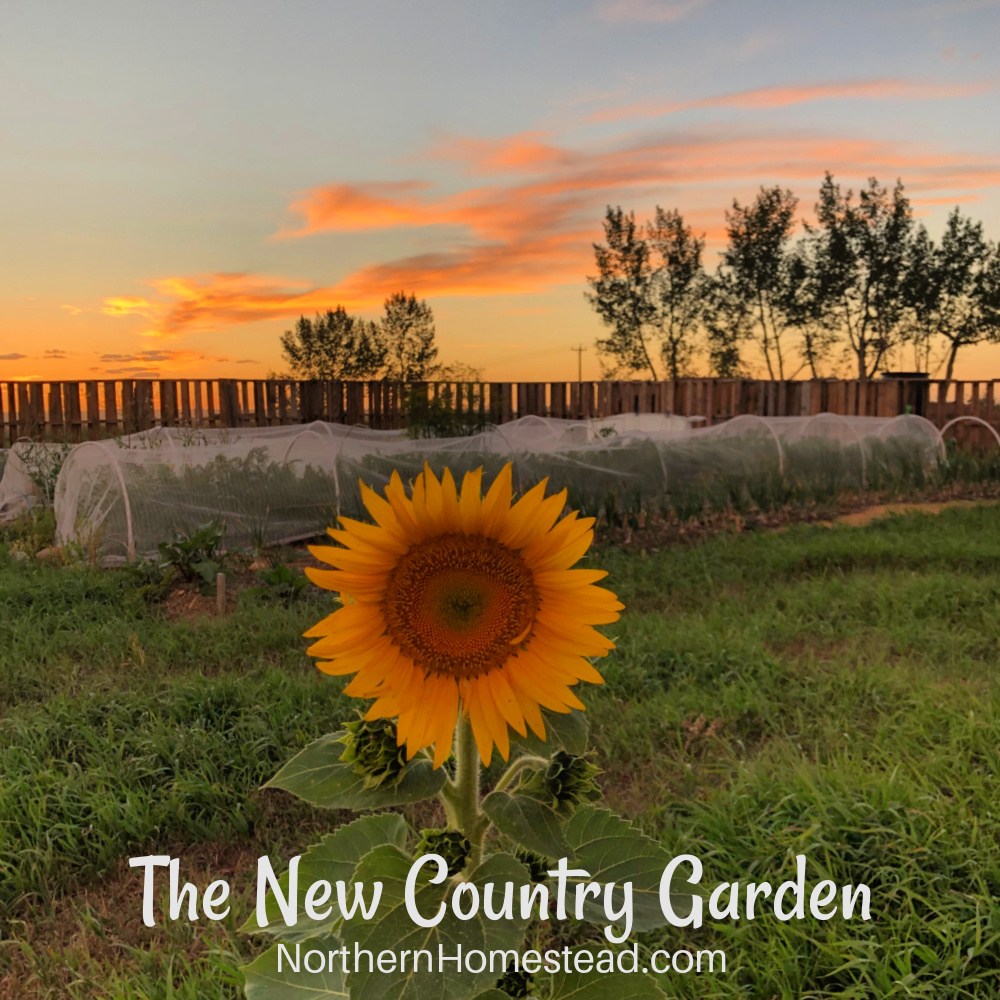
Last year in November we purchased a 2-acre country property. We have not shared much about it yet for several reasons but wanted to update you on it over the winter months. Today we start with the new country garden update.
Growing a garden away from home is not new to us. We have grown a country garden beside our urban garden for many years, be it at a friend’s farm or a community garden. New is that this time the land is ours and we can build up a more permanent garden.
Earning the permaculture design certificate I wanted to do everything right, so to speak. The new country garden taught me otherwise. Nothing went as planned and the results are surprising. So let’s see what happened.
The soil
It is a common assumption that the most important factor for a productive garden is good soil. The whole acreage was a pasture at the time we purchased it. A neighbor informed us that the soil would be gumbo soil, meaning a high content of black heavy clay.
In spring a local farmer stopped by and questioned the gumbo soil information, but he did not know what the soil at this particular location could be. We had to find out ourselves.
We did a simple soil test and were very puzzled about the results.
First, we discovered that there was a big difference between different locations. In one spot it indeed did look like clay, and a few feet from there it looked more like sand and in the next location, it was clearly gravel (yes, you read that right).
We found out that the location where I had planned the garden in my permaculture design, was mainly gravel which was overgrown with grass. So we changed the plan and moved the garden to a different location.
Here also the soil was just a mystery.
After a very dry summer and not much snow last winter, the soil was also very dry and extremely compacted. We quickly gave up on any no-till methods, unless we would bring in new soil, but that wasn’t what we were up to at this point.
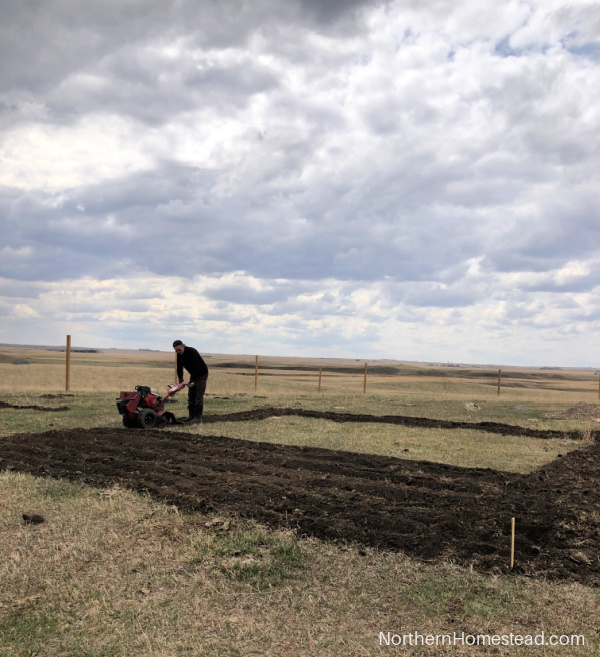
So using a heavy-duty tiller we tilled the soil. Later we noticed that double dig (in our case removing the top layer altogether) would probably be a better option. But as I said, the soil was so hard, that any digging was almost impossible.
The newly tilled garden looked like sand, mixed with organic matter to me, but could that be?
Later another local resident gave us another clue. The acreage was not just a former school side, which we knew, but also a former gravel storage place which we did not know anything about.
That explained all of our observations. What looked and felt like sand, was sand. We also had not fertilized or enhanced the soil with anything, we just wanted to see what it was like.
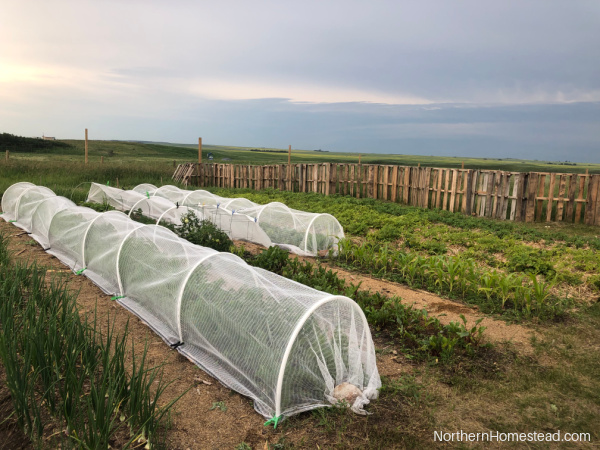
By now though, the garden was already up and growing, and growing quite nicely I would say.
The garden layout
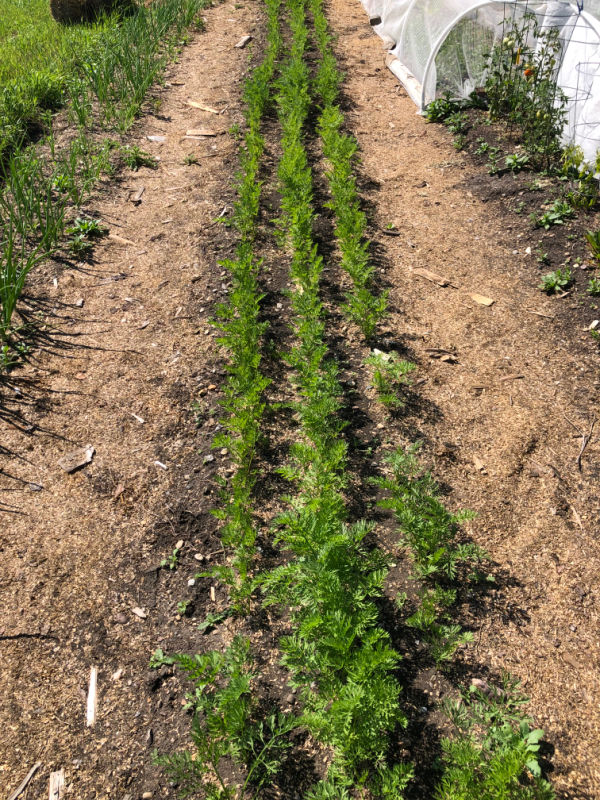
The garden location has an east south slope. We made the rows run south-north, hoping to keep moisture in.
We hilled the first few rows and filled the pathways with chainsaw dust. As we already mentioned in our home garden update, the shavings were not as nice for walking on as we had hoped, but they did help keep moisture in the soil.
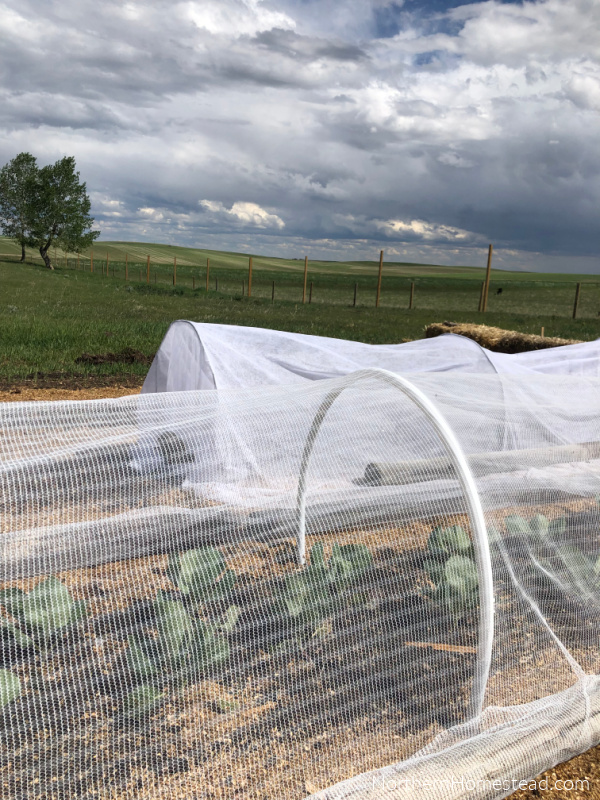
We also built row cover tunnels over anything that we thought would be attractive to rodents. The covers also give hail protection.
We also built a pallet fence protecting the garden from the prevailing northwest wind.
What grew well in our garden
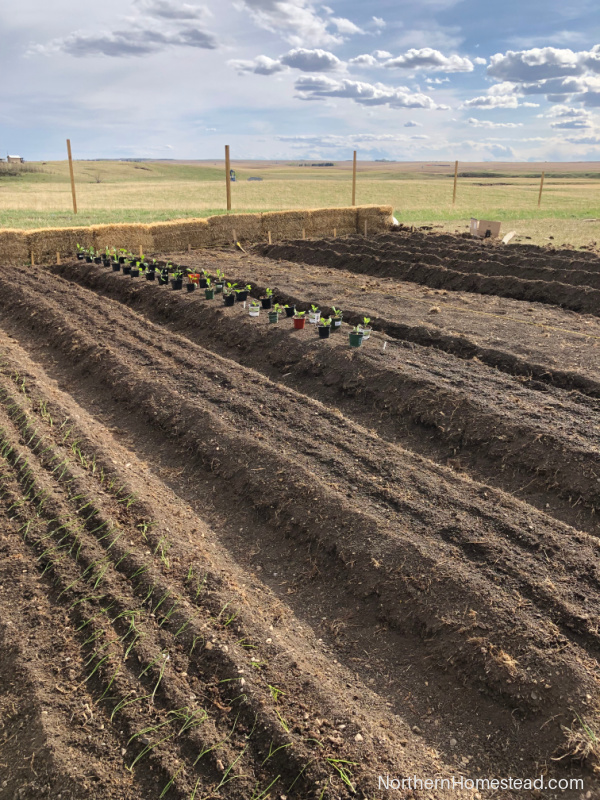
Looking at the soil, and considering the little rain and attention the garden got, nothing should have grown well in that garden. But we did not look at those things, we had a lot of fun planting our new garden. The picture above is from early spring before we filled in the pathways.
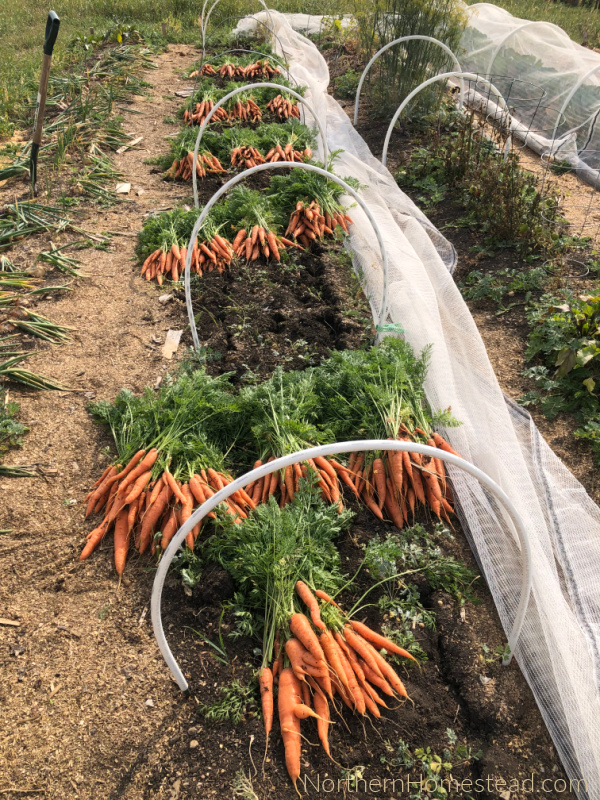
As we already shared with you, we got an amazing carrot harvest. We planted them in cornstarch as an experiment.
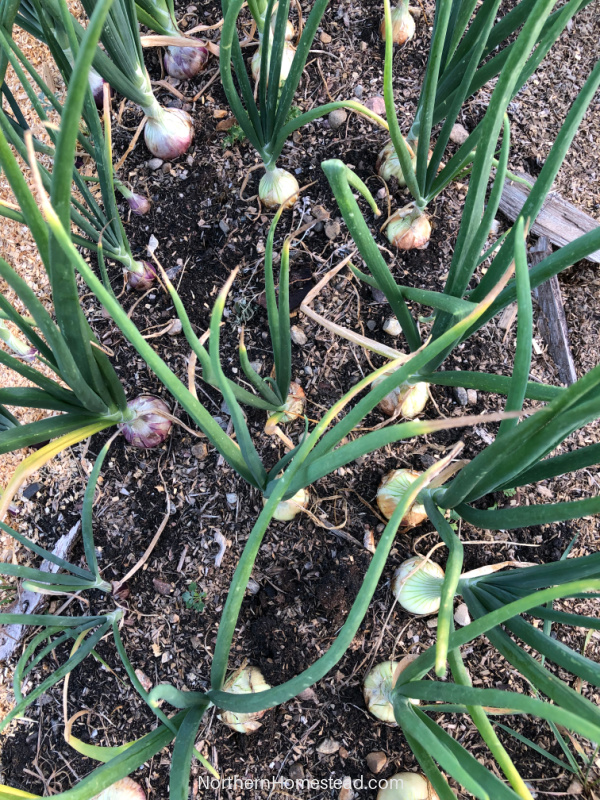
Onions also did really well. To our surprise, some kind of rodents tried to nibble on them but obviously did not find them very tasty. Note to self, everything in the country garden needs to be covered.
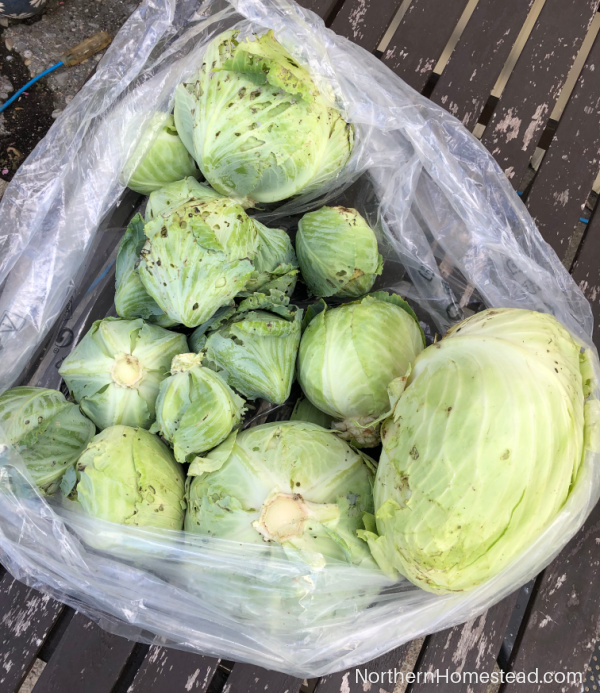
The cabbage did okay, I think we planted it too dense. Despite being covered all season, some cabbage butterflies did get into the cabbage. Still, we got enough to fill the fermented crock with sauerkraut. And we are still enjoying it.
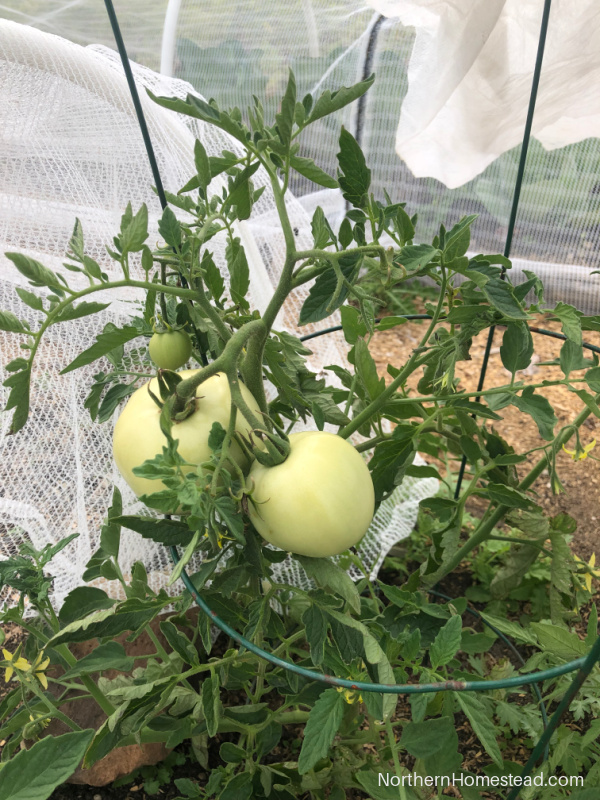
To our surprise, even the tomatoes did grow well and ripen. In our home garden, we grow them in the greenhouse or window-protected garden. Here in the open field, with all the wind they still produced. This first year it was all just an experiment. Giving them some wind and rodent protection, we think we could have a great tomato harvest even without a greenhouse.
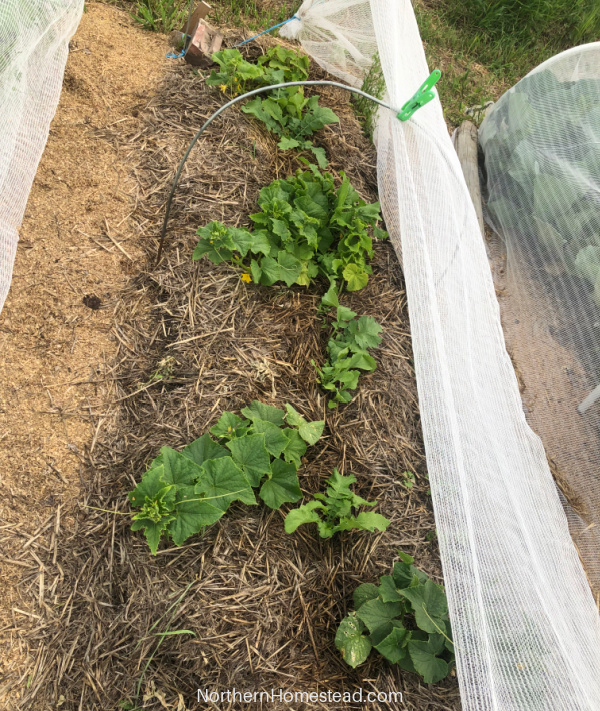
The same was true for cucumbers. This year they were really mostly on their own, with not much pampering. But still, we got some cucs to enjoy. With a bit more love and care, the cucumbers could produce quite well.
We also grew some herbs, flowers, and root veggies with fairly good results.
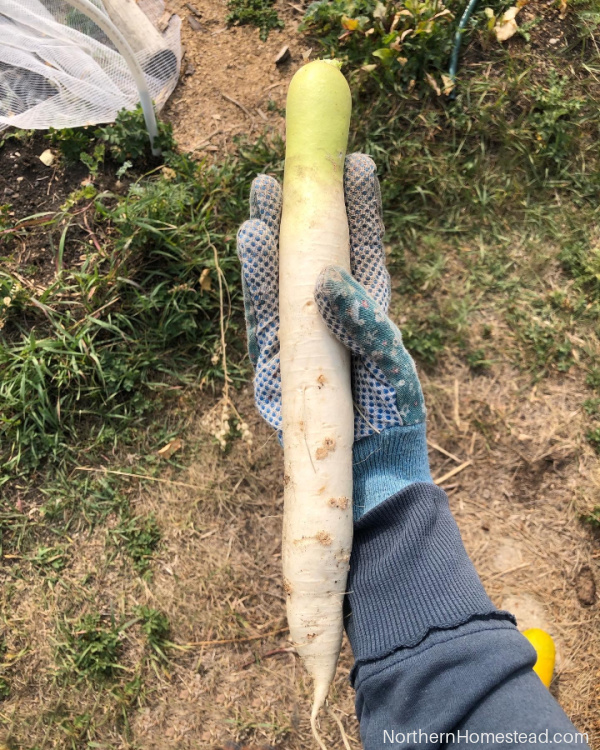
A daikon radish grew to about a foot without forking, telling us that the soil is okay going deeper. There doesn’t seem to be a very compact hardcore.
What did not grow well
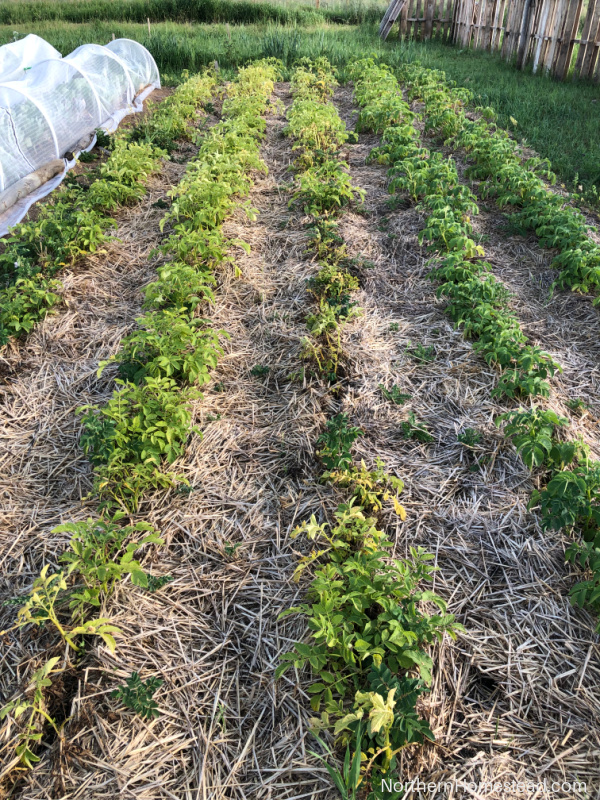
Potatoes, one of our main crops did not do so well. Potatoes are usually the best crop for a new garden. We planted lots, for one we were hoping to suppress weeds. Potatoes are usually vigorous growers and are great for that. But we were also suspicious about our soil and dryness, so planting more made sense.
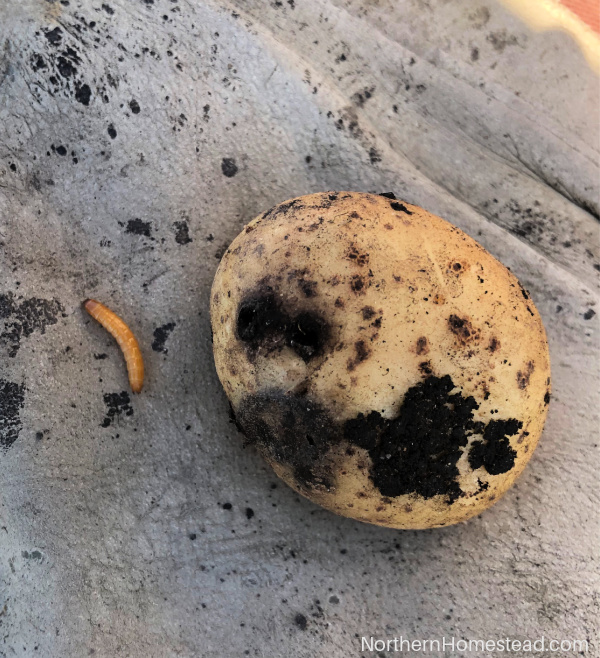
Besides just growing very slowly, we got wireworms in the potatoes, something we have never had before. We hadn’t even heard that it was a problem in Alberta.
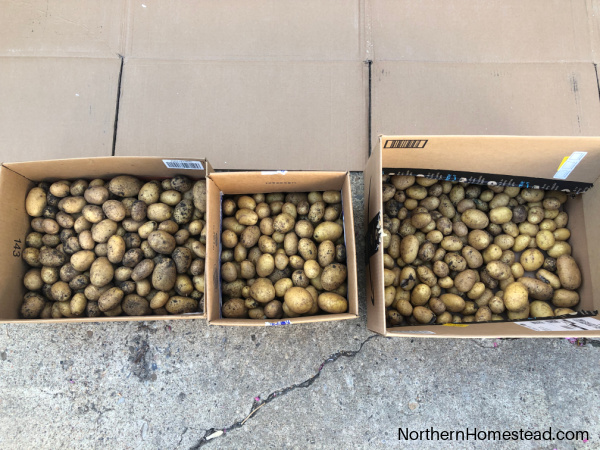
We still harvested about two to 3 pails of potatoes, but a lot of them are small and some are not useful.
Corn and squash did not do well from the get-go so we gave up on them, thinking the soil was just not nutritious enough for those heavy feeder plants. As we mentioned before, for this first year, we did not fertilize at all, just to see what will grow and what not.
Going forward from here
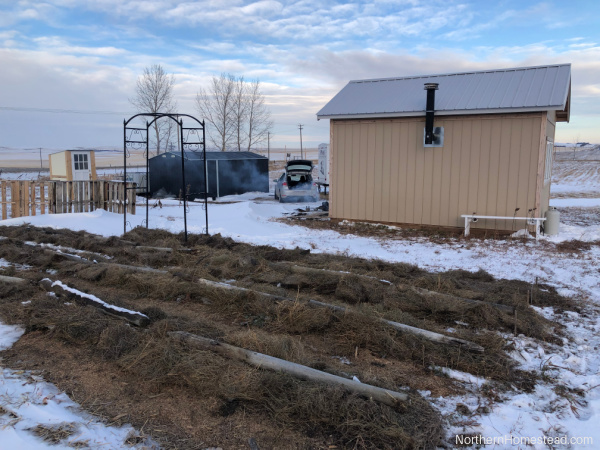
All the plants that did well here in the “sandy soil”, can be planted here again. With the possibility of making lots of hay on the property, mulching with hay and grass clippings will improve the soil over time. We like to stick to local resources without making the garden experience an expensive undertaking.
We are thinking of moving the potatoes to a different location altogether. It looks like the southwest corner of the property has more heavy soil that the potatoes might like more. There is lots of room, we will keep experimenting.
Most of all we are planning to have fun growing, which seemed to help the most. No joke here. The new country garden with the mysterious soil overall has produced a great harvest. Things are not always, or maybe never the way they seem to be.
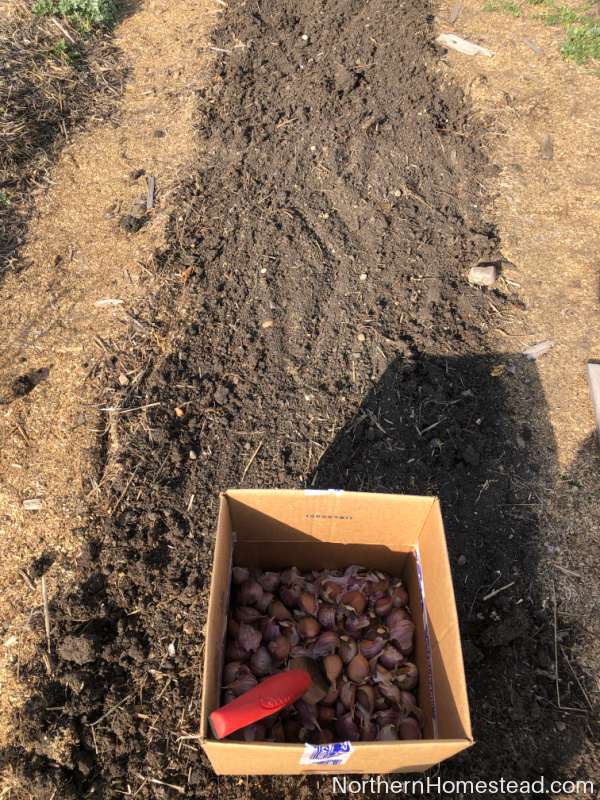
On this note, we planted garlic into the same soil, covered with old hay, and are looking forward to a great harvest next summer.
We invite you to subscribe to Northern Homestead and follow us on Instagram, Facebook, or Pinterest for the latest updates.

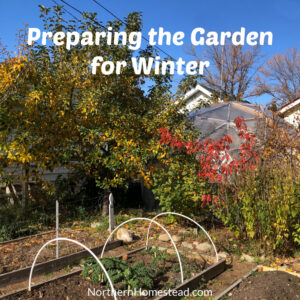
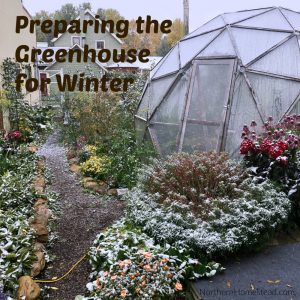
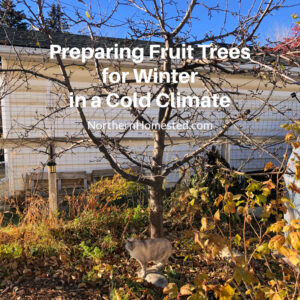
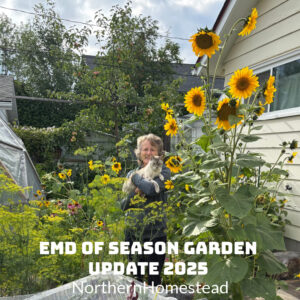
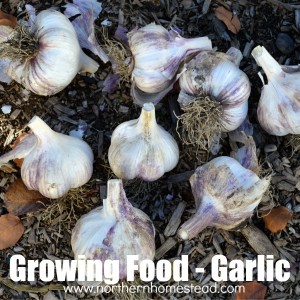
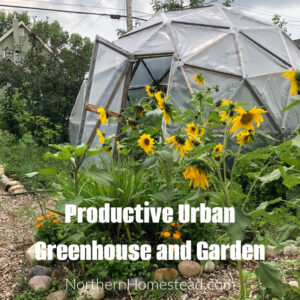
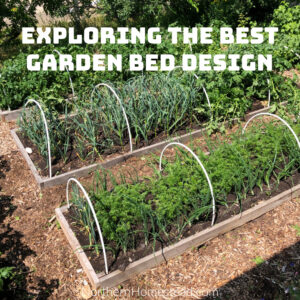
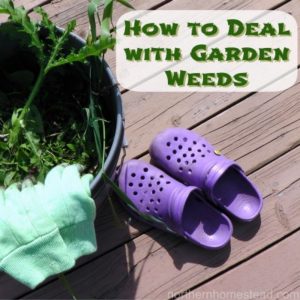
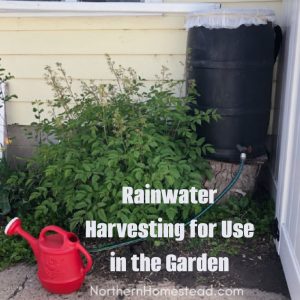
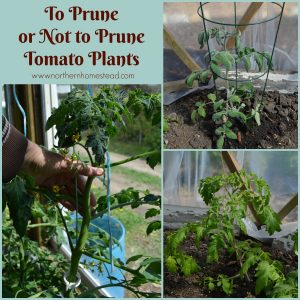

I am glad to hear that you bought a piece of land at nearly the same time as I did but mine is located near Mulhurst in Alberta.
I am truly inspired by your experience in the new land. I am just beginning to learn gardening and make it full time in 4 years when I retire. My first gardening there did not go well even though I managed to harvest some mini carrots, turnips and potatoes. I am hoping to follow your footsteps. Please continue to write about your experience. Thank you.
Congratulation on your new land. It is so exciting to develop and grow with a property. See the next 4 years before your retirement as important steps toward full-time gardening. Even if you only grow potatoes or some kind of cover crop, do it anyways. It usually takes a couple of years till a garden gets established. It is not what you do that is so important in these first years, it’s the soil life. Feed the soil, and it will feed you.
Hi,
This is a very helpful post. We recently bought a property with a significant amount of land but not a garden to ge found… We plan to be a no till garden but I’m thinking the only way to start is to till the grass. Is that what you did? Do you mind sharing where you had your soil tested? Can you do this anytime during the year?
Thank you!
Congratulation on your new land. We did the soil test ourselves. If you want a professional, here is some info on that.
You can do it either way, tilling first or just covering the grass. It really depends on what you want and if your soil is any good for gardening. In other words, you either bring in soil to cover the grass or till your soil and grow in it. The article all about starting a garden has a lot of information.